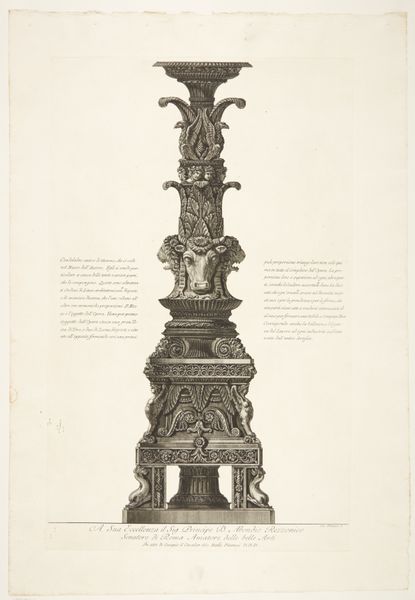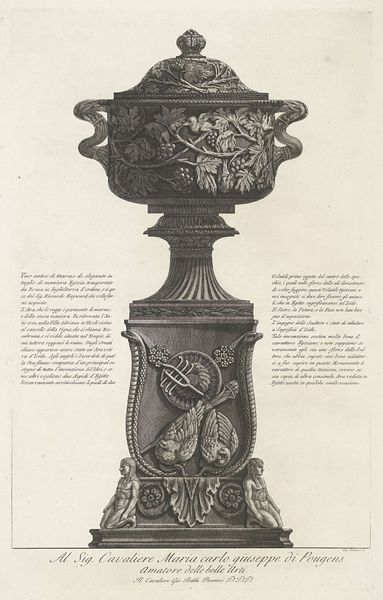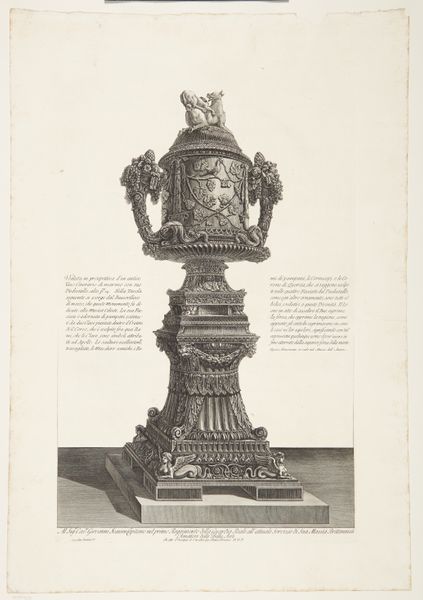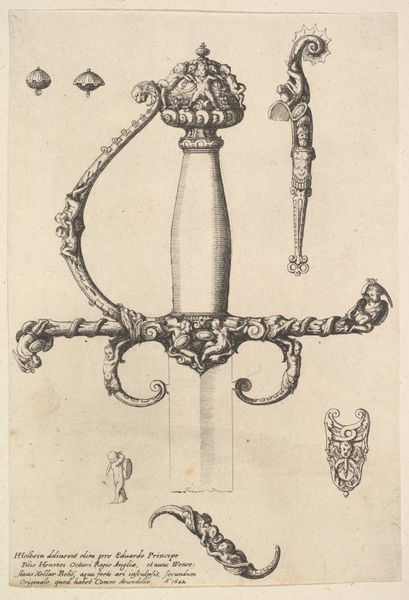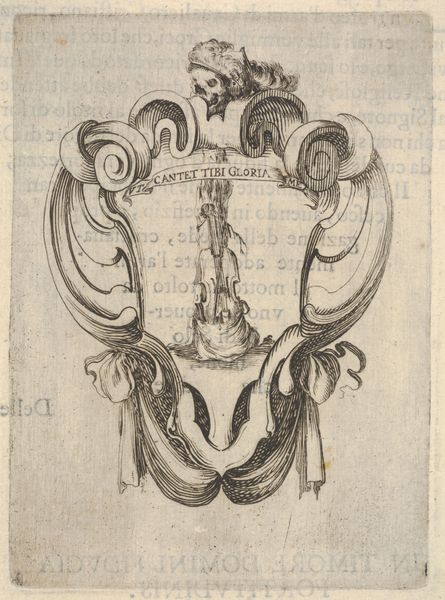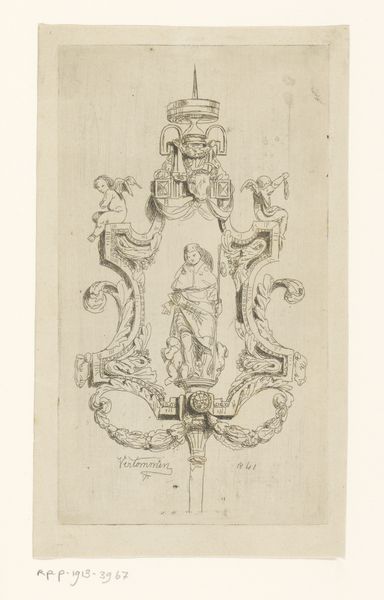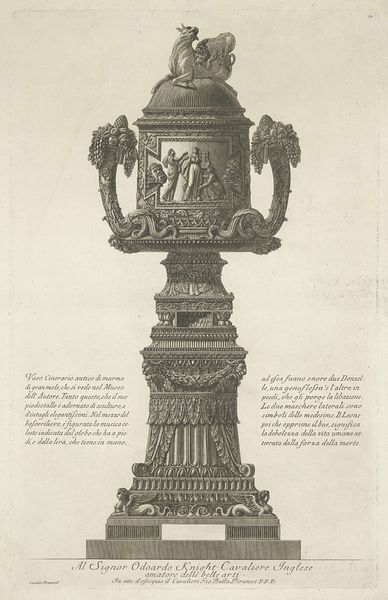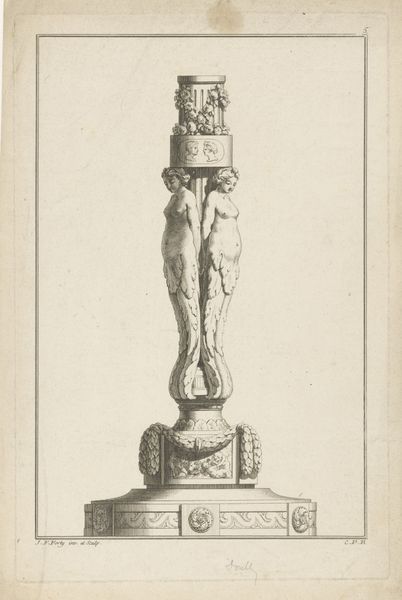
Perspective view of the same candelabrum, from 'Vasi, candelabri, cippi, sarcofagi, tripodi, lucerne, ed ornamenti antichi, vol. II' (Vases, candelabra, grave stones, sarcophagi, tripods, lamps, and ornaments) 1778 - 1780
0:00
0:00
drawing, ornament, print, engraving
#
drawing
#
ornament
#
neoclassicism
# print
#
geometric
#
history-painting
#
engraving
Dimensions: Sheet: 19 7/8 x 28 3/4 in. (50.5 x 73 cm) Plate: 26 x 16 5/16 in. (66 x 41.5 cm) printed horizontally
Copyright: Public Domain
Curator: Look at this remarkable print by Giovanni Battista Piranesi, titled "Perspective view of the same candelabrum" from the late 1770s. Part of his series on ancient vases and ornaments, it showcases a fantastic candelabrum. Editor: My first thought? It's a towering monument rendered with incredible detail. It looks so meticulously carved but, at the same time, unsettling—a bit like a fever dream of classicism. The dizzying layers of ornament seem almost suffocating. Curator: Exactly. Piranesi wasn't just documenting ancient artifacts; he was reimagining them. His work, especially these engravings, played a significant role in shaping Neoclassical tastes and the Grand Tour. Editor: How so? I see that classical past being put through a really interesting filter, perhaps for propaganda. You’ve got the strategic arrangement of objects loaded with symbolistic undertones to shape ideologies and promote imperial ambitions of the present time through the memory of antiquity. Curator: Precisely! Piranesi fueled the era's fascination with Roman grandeur. He amplified the scale and drama, which resonated deeply within the contemporary socio-political context and the wealthy elites undertaking these Grand Tours, as souvenirs or conversation pieces about classical civilizations. The market shaped how art got interpreted. Editor: The use of those hybrid architectural motifs—griffins, figures, botanicals—seems so purposeful. As the Empire expands, the art mirrors it through accumulation and hybridity of ancient mythologies that blend together under a unified purpose of legitimizing imperial agendas. Curator: Piranesi’s dramatic use of light and shadow in his etching enhanced that sense of grandeur. And remember, accurate archaeological reproduction wasn't his primary concern. Editor: Which makes this work even more fascinating from a contemporary perspective. It acts almost as a commentary on cultural appropriation, even if unintentional, because the artist reproduces art with his own spin, fueled by a desire to assert dominance through the act of claiming artistic precedent. Curator: I see your point. Understanding how deeply Piranesi’s inventions permeated artistic and political discourse during his time, casts new light on these magnificent pieces, revealing a layered history. Editor: It has also transformed my initial sense of uneasiness to that of reflection. We are constantly creating memories, which become our own present artifacts someday in the future. It’s interesting how that also gives us a sense of agency to influence our shared human future through art.
Comments
No comments
Be the first to comment and join the conversation on the ultimate creative platform.

